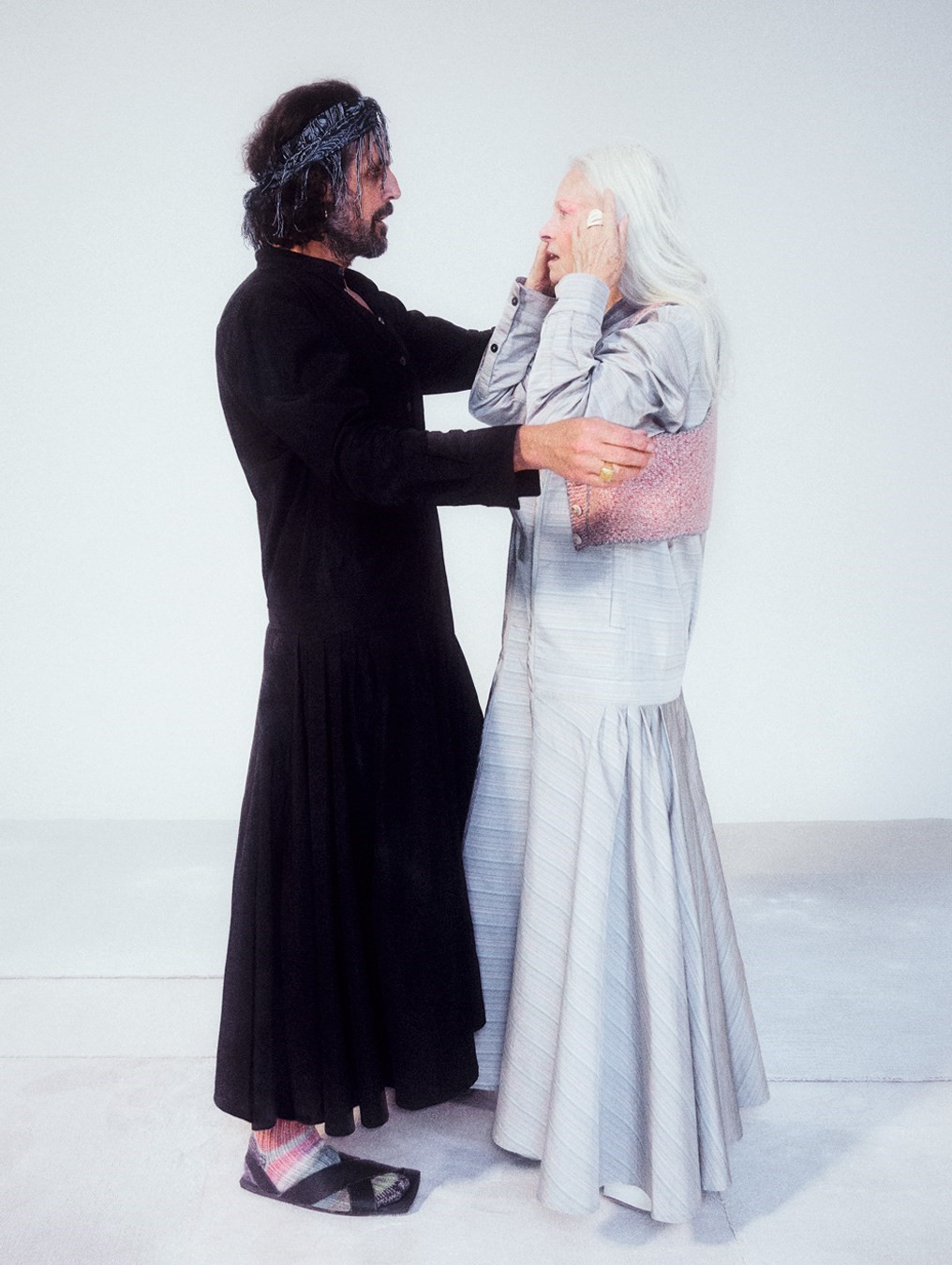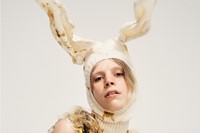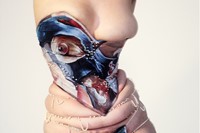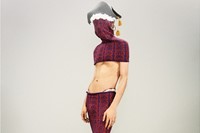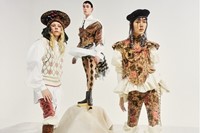It’s difficult to write about Vivienne Westwood – difficult because she did so much, and her impact was so great, but also because so much is already known about the stories told through her clothes, which she always intended to be narrative, sometimes even didactic. Look at Westwood’s clothes, their shifting form through the years, and you’ll see the journey of her life reflected, both the intentional moves of intellectual fixation, reflected through aesthetic roundabouts, but also her innately personal story. Westwood was born in 1941, to working-class parents in the village of Tintwistle, near Manchester – and there is something innately working-class in her love of pomp and regalia, in the notion of dressing up, a phrase she used to title one of her collections. Her love of the English countryside where she was raised came through in her use of stout tweeds, in colours that recalled heathers and bracken, yet these collied with the urban and the urbane, like a knee-jerk reaction to her move to London aged 17. In the Derbyshire countryside, Westwood learned how to make clothes; in London, she learned how to create fashion.
She did so alongside Malcolm McLaren, a provocateur whose partnership with Westwood invented some of the most important clothing of the late 20th century. The chief architects of the punk movement – specifically of its visual impact, arch, knowing and embedded with meaning – Westwood and McLaren took over a shop at 430 Kings Road and began to make clothes, under various ever-changing labels. What united all their work was a sense of otherness, of chafing against accepted rules and norms, an ideology that pervades Westwood’s work throughout her entire life. Her favoured clarion call was a quote from Bertrand Russell: “orthodoxy is the grave of intelligence“. Prior to beginning work with McLaren, when Westwood had already turned 30, she worked as a teacher, an approach which lingered in her work. It’s there in her painstaking research – as a primary school teacher, she lead her young wards to the fishmonger to examine real fish before making an aquamarine mobile in class, mirrored in the way she pored over the cut of 17th-century breeches to inspire the cut of the trousers for a collection that came to be known as Pirate, her first shown on a catwalk in 1981. But her urge to teach runs deeper – there is the notion of communicating knowledge, of communicating something greater, more vital, than just making someone look great. Although Westwood’s clothes did that, whether their wearers wound up resembling a punk, a pirate or a powdered and corseted favourite from the court of Charles II.
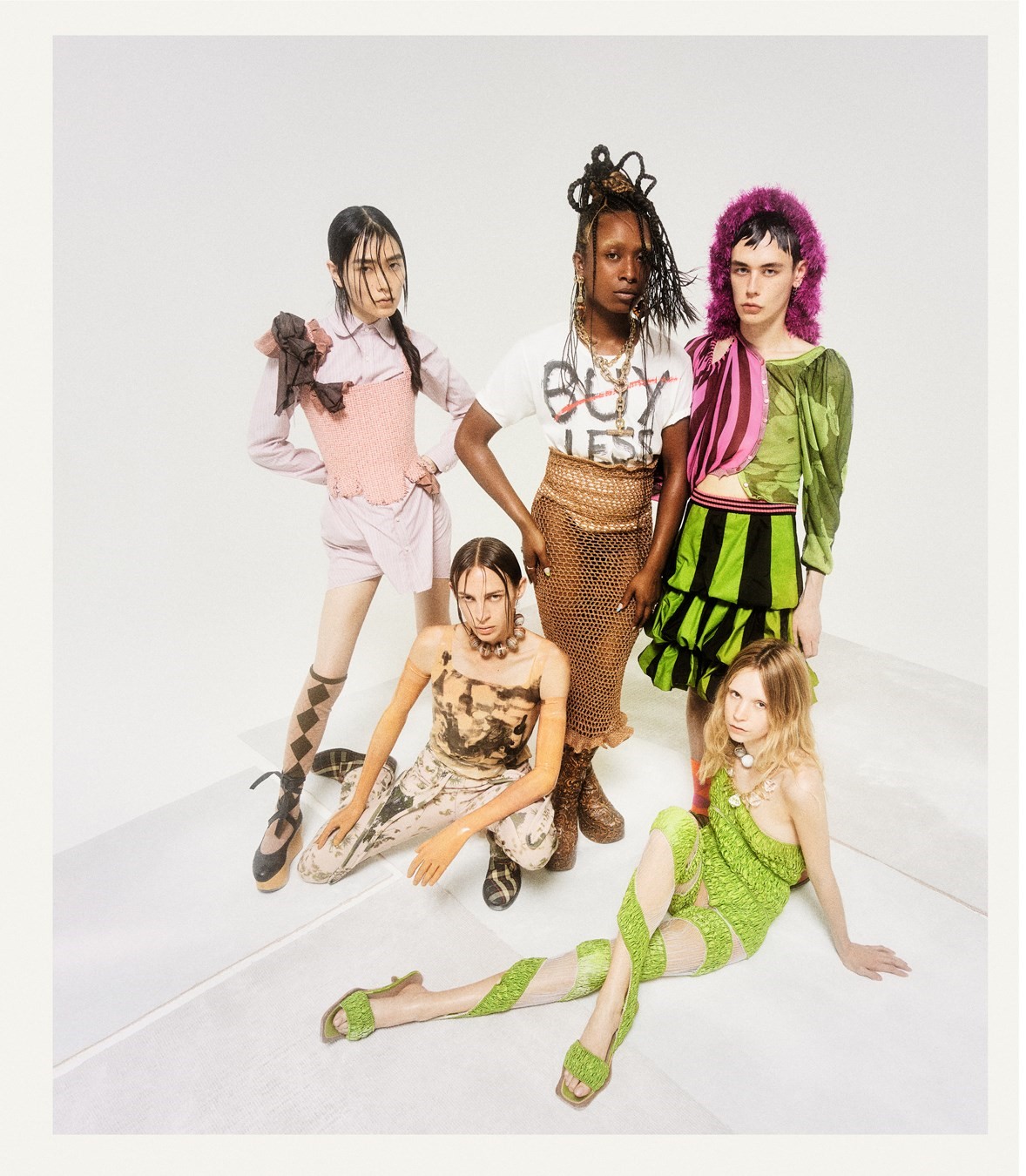
Westwood’s interests strained at the confines of fashion, of what our clothes are allowed to convert about our idealism, our intellectual beliefs. In the 1980s, she became enamoured with high culture, voraciously consuming masterpieces of art and literature and creating collections laden with allusions to classical antiquity and clothes famously printed with devices filched from the great art and design of the age of enlightenment. Alongside, Westwood championed elitism and intellectual stimulation, exercising the mind as well as – or even instead of – the body. Working alongside her husband Andreas Kronthaler, her former student, now her husband and the closest creative collaborator of her entire 51-year career, she explored the meaning of historical costume and French haute couture to express her ideals of civilisation. Again, the clothes tell her story: melding together British predilections and European tastes, they created a unique fusion. In the mid-2000s, Westwood shifted her obsessions to activism, political and ecological, using her designs as palimpsests for her deep-seated beliefs and returning to the notion of sloganeering that she had first explored during punk. Regardless of their intentions, Westwood’s designs resembled no other.
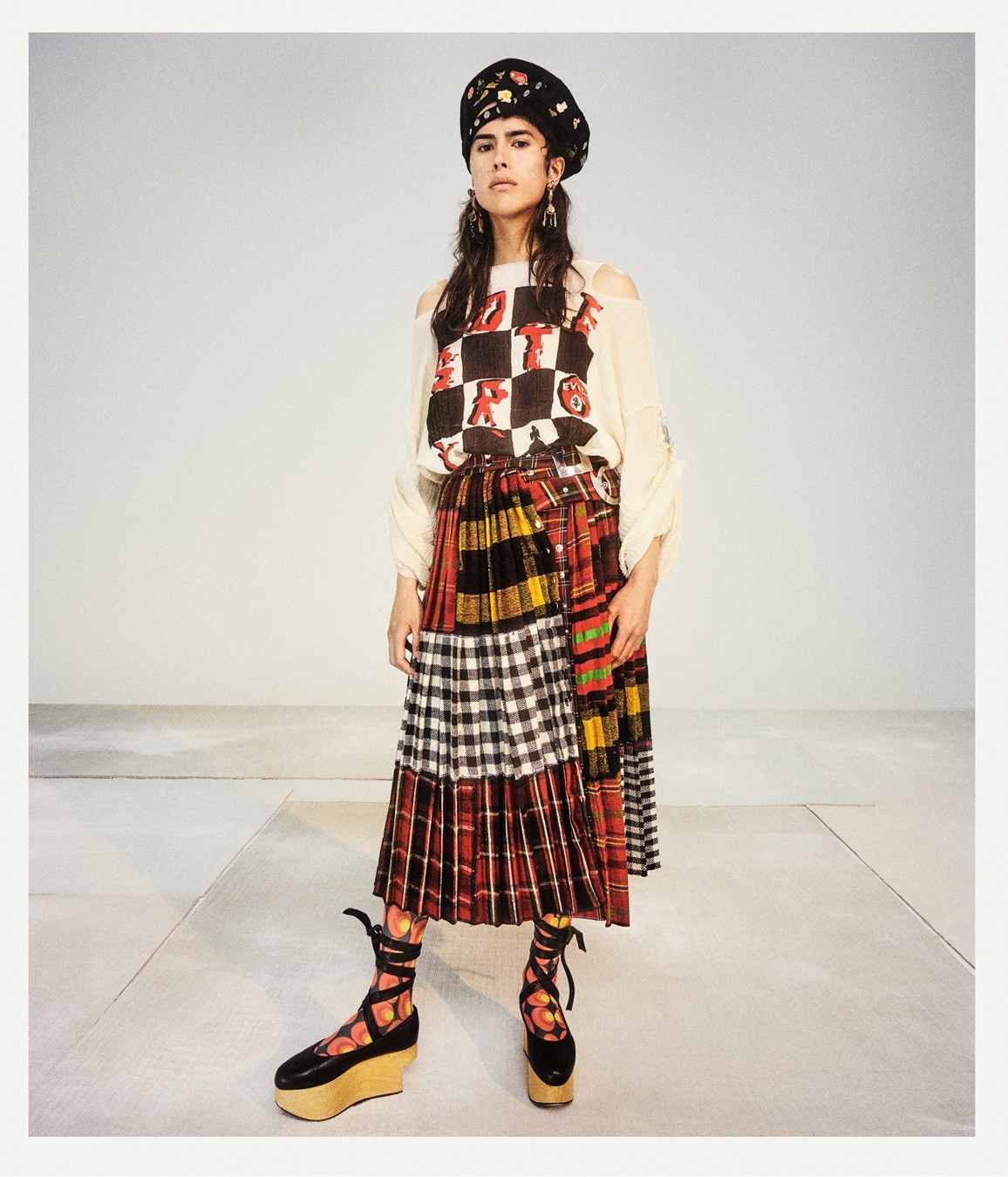
Actually, they did. They resembled the hordes of designers who followed her, inspired by her seemingly endless font of ideas. A few ardent admirers: Jean Paul Gaultier, John Galliano, Lee Alexander McQueen, Rei Kawakubo, Azzedine Alaïa, Christian Lacroix, Karl Lagerfeld. Legion are the designers who didn’t acknowledge Westwood’s influence, but who borrowed and continue to borrow (to put it politely) from her awe-inspiring catalogue of greatest hits. John Fairchild of Women’s Wear Daily dubbed her the “designer’s designer”, one of six from whom fashion hung by a golden thread at the close of the 20th century. Alongside Yves Saint Laurent, hers is the contribution that has most fundamentally shaped the way we dress today. Don’t take my word for it: tube skirts, printed denims, underwear as outerwear – not least her reinvented corset, ironic tweeds, platform shoes, rib-hugging knitwear, high-fashion trainers (she was the first to show them on a catwalk). And we haven’t even mentioned the exceptional legacy of her punk innovation, one that literally and figuratively ripped fashion apart at its seams, whose shock-waves affected every facet of culture, from theatre and architecture to interior design and graphics.
It is part of Vivienne Westwood’s legacy that there will be no other fashion designer like Vivienne Westwood. Because no other figure could achieve this impact again, because Westwood’s legacy was to fragment the industry, to challenge the hegemony of high fashion as an aristocracy of money and, rather, to make it a meritocracy, where ideas are the currency. A place where penniless yet innovative designers could be championed and propelled to greatness – just as punk’s legacy allowed anyone who could pick up an instrument to start a band. Indeed, despite her fluctuating affiliations and obsessions, Westwood championed freedom, constantly. It’s sewn into every seam of her clothes.
